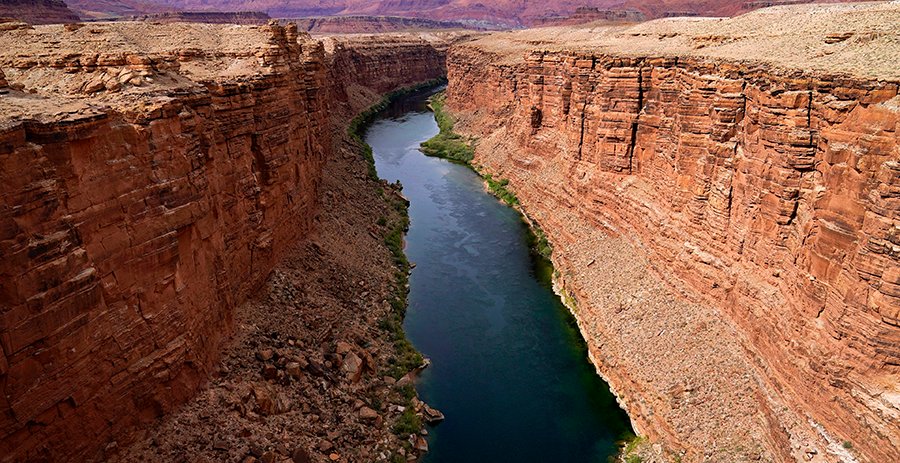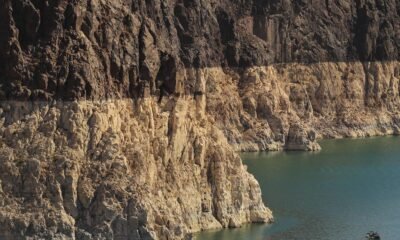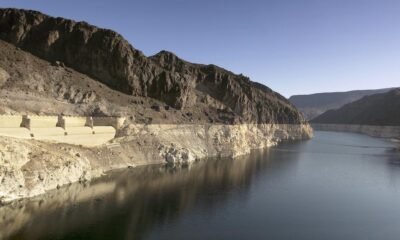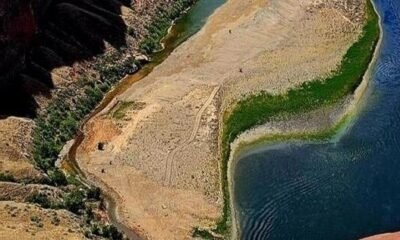Colorado River
Colorado River States Brace for Water Cuts, Strategize for the Future

WASHINGTON (AP) — The federal government is set to announce significant water cuts impacting around 40 million people who rely on the Colorado River, a crucial resource for the western United States.
As part of normal procedures, the Interior Department will reveal water availability for the upcoming year, allowing Western cities and farmers to prepare accordingly. However, critical negotiations are underway to determine how the states will manage the river’s declining water supply beyond 2026, when many existing guidelines expire.
The Colorado River services seven Western states, over two dozen Native American tribes, and parts of Mexico. It supports extensive agricultural land and generates essential hydropower. Unfortunately, a combination of overuse, rising temperatures, and persistent drought conditions has resulted in reduced water flow.
This scarcity has complicated the political landscape of water management in the region. Here’s a breakdown of the current negotiations.
WHAT ARE STATES DISCUSSING?
Key discussions focus on the allocation of the Colorado River’s water after 2026. The distribution is currently governed by a web of agreements and contracts, many of which will expire at the close of 2025. Following years of drought, the seven U.S. basin states and the federal government established rules in 2007 to better cope with declining water levels in Lake Mead and Lake Powell, the river’s primary reservoirs.
These 2007 regulations include provisions for water cuts based on conditions at Lake Mead. As a result, states and tribes are drafting new plans that anticipate deeper cuts after 2026 due to projections surrounding climate change impact.
“The ultimate problem is a decrease in watershed runoff due to climate change,” explained Jack Schmidt, a professor at Utah State University. “The proximate problem is the need to decrease our water usage.”
HOW DO THESE TALKS DIFFER FROM SHORT-TERM CUTS?
This month, the federal government will announce water cuts for 2025, potentially extending existing limitations. The Bureau of Reclamation evaluates factors like precipitation and water consumption to predict future reservoir levels. If Lake Mead falls below certain thresholds, states like Arizona, California, and Nevada could face additional cuts, although California has so far avoided reductions due to its senior water rights.
Arizona has shouldered most cuts, while Mexico and Nevada faced reductions. However, these adjustments are temporary, and the negotiation for future guidelines is ongoing.
WHAT MEASURES ARE STATES TAKING TO CONSERVE WATER?
Arizona, Nevada, and Mexico experienced federal water cuts in 2022, which worsened in 2023 before stabilizing. As the situation escalated, these states agreed to conserve an additional 3 million acre-feet of water until 2026, with federal funding supporting these initiatives.
Meanwhile, the Upper Basin states of Colorado, New Mexico, Utah, and Wyoming have not utilized their full allocations from the river and share a percentage of the available water yearly. One acre-foot typically serves two to three U.S. households annually.
HAVE CONSERVATION EFFORTS BEEN SUCCESSFUL?
Yes, for now. Favorable weather in 2023, combined with ongoing conservation efforts, has improved the reservoirs’ short-term outlook. Lake Powell is approximately 39% full, while Lake Mead hovers around 33% capacity.
Despite this temporary improvement, climate scientists warn that higher temperatures linked to climate change will continue to diminish future runoff and increase evaporation losses. Brad Udall, a senior scientist at Colorado State University, emphasizes that the recovery should not be mistaken for a long-term solution.
WHAT ARE THE OUTSTANDING DISAGREEMENTS?
The primary contention lies in future water management after 2026. Recent plans from various stakeholders propose differing strategies for reservoir oversight. States such as Arizona, California, and Nevada have urged the government to consider water levels across all seven reservoirs rather than focusing solely on Lake Powell and Lake Mead.
Their proposal suggests that if the combined water storage drops below a certain threshold, deeper cuts should be equitably shared. In contrast, Colorado and other Upper Basin states advocate for a more immediate response to falling reservoir levels, proposing aggressive cuts to lower basin states ahead of the Upper Basin allocations.
WHERE DO THINGS STAND MOVING FORWARD?
Draft federal regulations are expected by December, incorporating various plans into a cohesive strategy. Until then, dialogue among states, tribes, and negotiators will continue in search of a viable agreement.
The Associated Press receives support from the Walton Family Foundation to cover water and environmental policies, though the AP maintains editorial independence over all content.


















